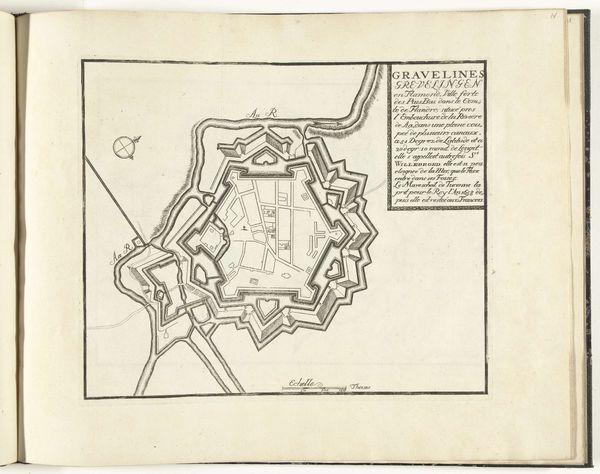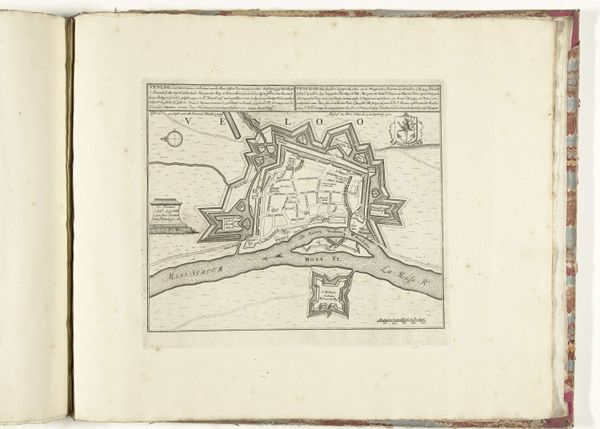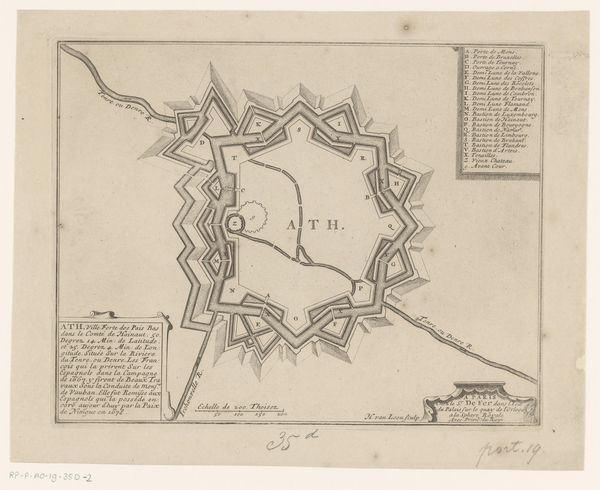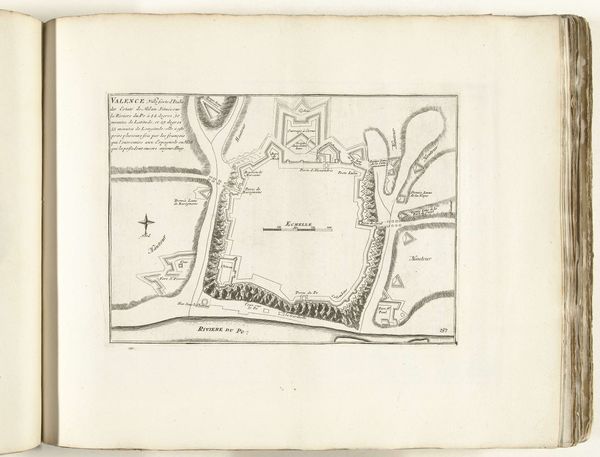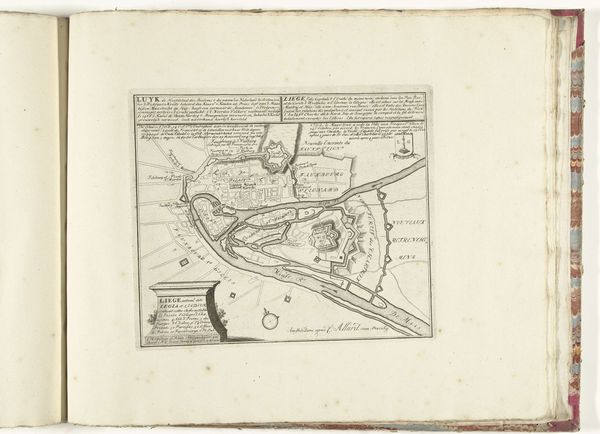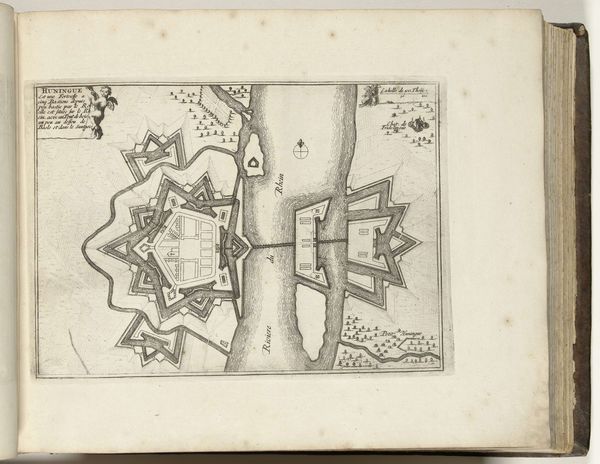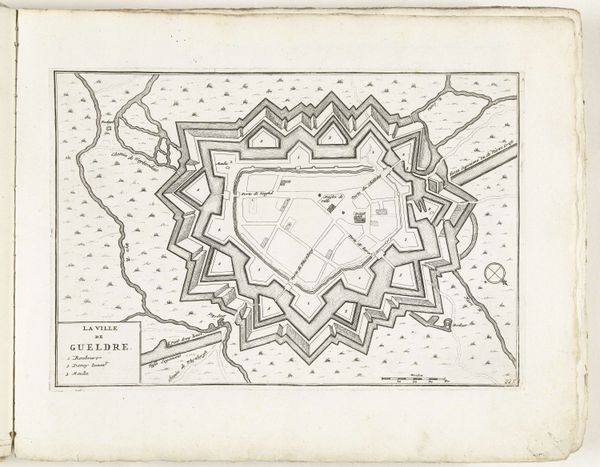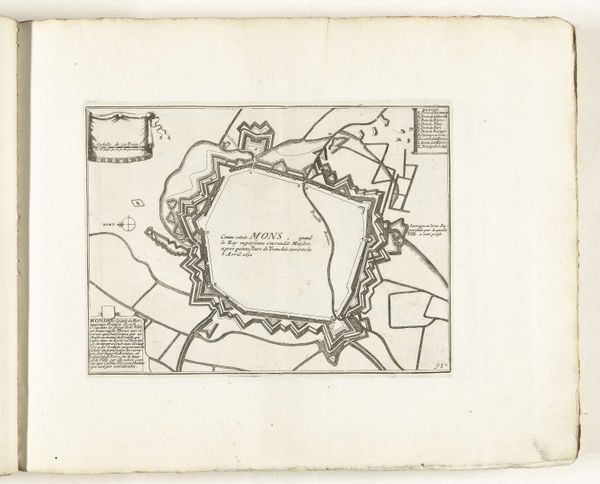
drawing, print, ink, engraving
#
drawing
#
baroque
# print
#
ink
#
geometric
#
cityscape
#
engraving
Dimensions: height 166 mm, width 202 mm
Copyright: Rijks Museum: Open Domain
Curator: Here we have an intriguing plan of Gulik, meticulously rendered between 1686 and 1750 by an anonymous hand, crafted with ink as a drawing and engraving. The geometric structure immediately strikes me. Editor: You know, it kind of reminds me of a snowflake, if snowflakes were made of stone and strategically designed to ward off invaders. It’s almost beautiful in its deadly precision, like a mathematical poem written in fortifications. Curator: Indeed. Notice the rigorous geometric organization; the prominent citadel commanding the upper-left, juxtaposed against the organized chaos of natural streams, or moats surrounding the walls. The artist successfully juxtaposes order with nature to highlight humanity's capacity to master its environment. Editor: I’m drawn to the tiny fortress. A fortress within a fortress! It's like the city has its own stubborn, independent heart, unwilling to compromise with any enemy. It sparks the question: what was it like to live within those very intentional boundaries, with such premeditated design? Curator: That is a curious tension present in the rendering, and its inherent purpose of documentation versus lived reality. Structurally, we can read the clean lines and carefully planned angles as demonstrations of power. A kind of visual propaganda for the city itself. Editor: And it really does invite speculation. A grid where human lives are neatly filed. Almost oppressive but impressive as an achievement. In a time before photography, illustrations like this were marketing for people. But look, they survived, this still lives as a testament to the creator and creation. Curator: A fascinating way to express its artistic intent, truly. The technical rendering and precise engraving invite a certain level of formal engagement. We could even read the image as a network of vectors expressing political ambition and strength. Editor: Ultimately it gets you wondering. Those careful lines represented actual buildings, homes, lives, worries... It all feels like an old, forgotten dream now captured as a faint imprint from the past. Curator: Yes, it allows us a measured and meticulous way of viewing the city in its context. Thank you for those humanistic reflections. Editor: Thanks, it was quite fun looking at Gulik from two totally different points.
Comments
No comments
Be the first to comment and join the conversation on the ultimate creative platform.
